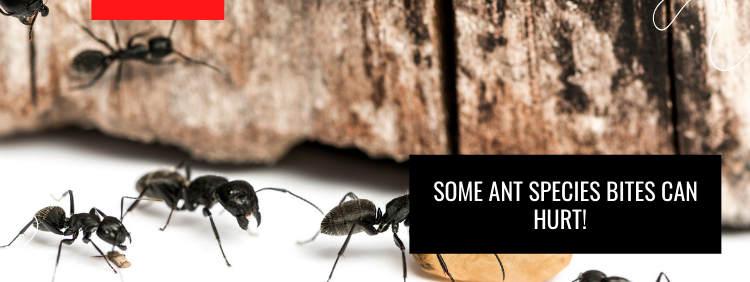 Ants are fascinating creatures, but they’re also a nuisance. Some species, like carpenter ants, can do severe damage to your home. Others can cause physical pain through bites or stings. Any ants in or around your home will have you exploring ant removal techniques. But which ants will damage your home, and which ones pose a physical threat? Read on to learn more about two types of ants with bites that can really hurt!
Ants are fascinating creatures, but they’re also a nuisance. Some species, like carpenter ants, can do severe damage to your home. Others can cause physical pain through bites or stings. Any ants in or around your home will have you exploring ant removal techniques. But which ants will damage your home, and which ones pose a physical threat? Read on to learn more about two types of ants with bites that can really hurt!
 Ants are fascinating creatures, but they’re also a nuisance. Some species, like carpenter ants, can do severe damage to your home. Others can cause physical pain through bites or stings. Any ants in or around your home will have you exploring ant removal techniques. But which ants will damage your home, and which ones pose a physical threat? Read on to learn more about two types of ants with bites that can really hurt!
Ants are fascinating creatures, but they’re also a nuisance. Some species, like carpenter ants, can do severe damage to your home. Others can cause physical pain through bites or stings. Any ants in or around your home will have you exploring ant removal techniques. But which ants will damage your home, and which ones pose a physical threat? Read on to learn more about two types of ants with bites that can really hurt!

